Beef Lauya is a Filipino soup that showcases the brilliance of simplicity in traditional cuisine. While similar to the well-known nilaga, this variant distinguishes itself through the generous use of fresh ginger, which infuses the clear broth with warming depth and subtle heat.
The slow-simmered beef becomes remarkably tender, while fresh vegetables add brightness and texture to this nourishing bowl. Popular during the monsoon season, Lauya is more than just sustenance – it's a testament to Filipino cooking's knack for turning humble ingredients into something truly special.
This soup has earned its place in Filipino homes not only for its comforting qualities but also for its reputation as a restorative dish, thanks to ginger's natural healing properties. Whether served on its own or paired with steaming white rice, Beef Lauya demonstrates how a few quality ingredients, treated with patience and care, can create a dish of remarkable depth and character.
Jump to:
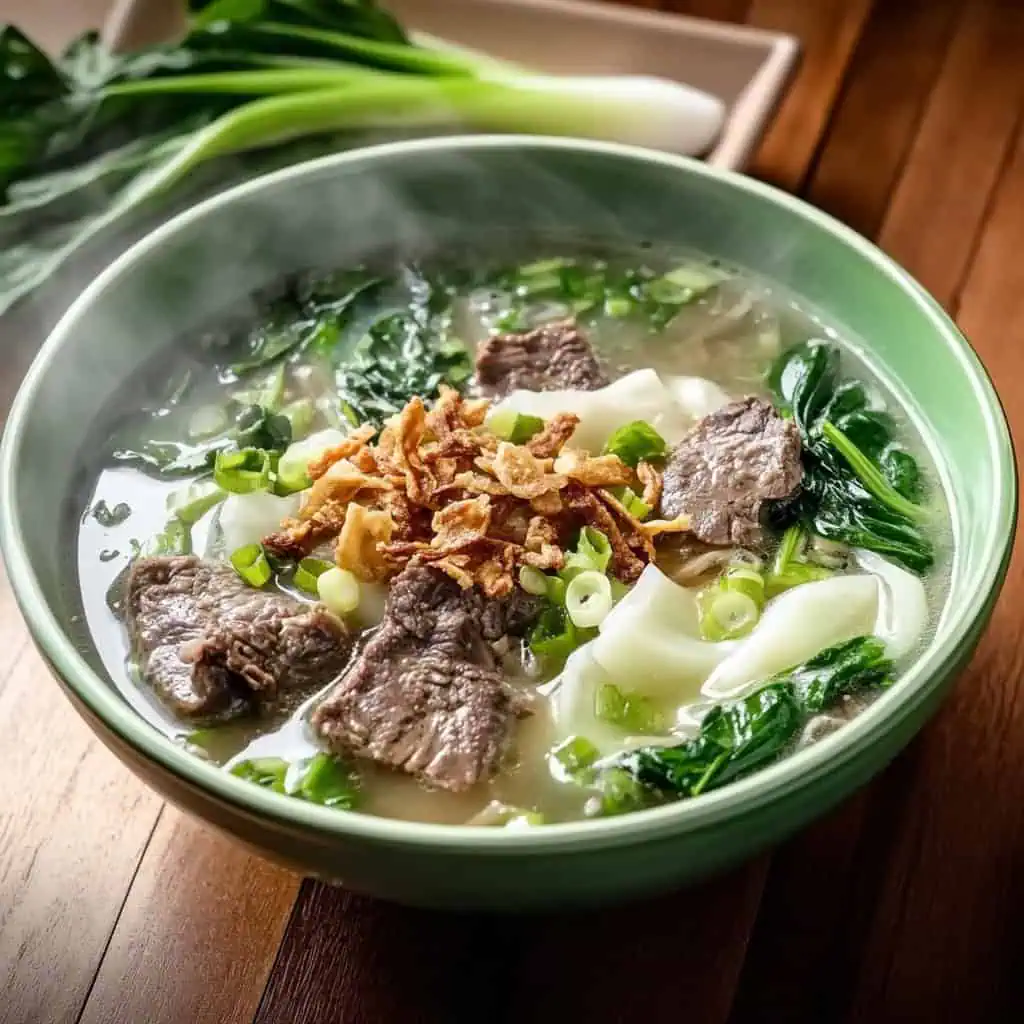
Why You'll Love This Recipe
- Healing Properties: Loaded with ginger's anti-inflammatory and immune-boosting benefits
- Complex Flavors: Perfect balance of savory beef, aromatic ginger, and fresh vegetables
- Versatile: Works with different cuts of beef and vegetable combinations
- Make-Ahead Friendly: Tastes even better the next day
- Budget-Friendly: Uses affordable cuts of beef that become tender through slow cooking
Ingredients
The ingredients in Filipino Beef Lauya create a perfect harmony of flavors and healing benefits. Beef provides rich protein and depth, while abundant ginger—the star ingredient—offers warming properties and immune-boosting benefits that distinguish this soup from regular nilaga.
The aromatics (onions and peppercorns) build a flavorful foundation, while fish sauce adds that essential umami depth without overwhelming. Fresh vegetables like bok choy and cabbage provide texture contrast and nutritional balance to the hearty meat, while staying firm enough to avoid becoming mushy.
The crispy fried shallots finish the dish with a delightful textural element and subtle sweetness that complements the savory broth. Together, these ingredients create a nourishing, balanced soup that's both healing and deeply satisfying.
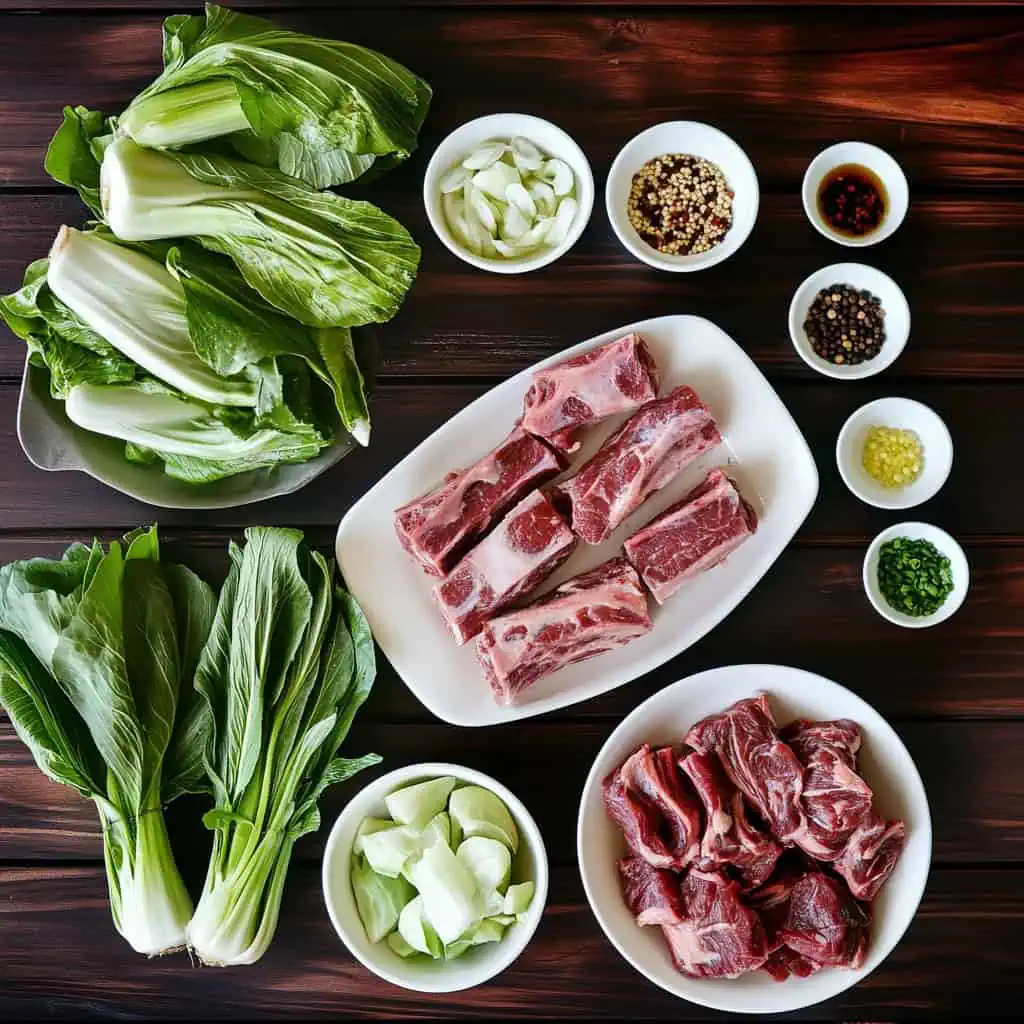
- 1.5-2 kg beef (neck bones, beef ribs, oxtail, or stewing beef)
- 2 thumb-sized ginger, thinly sliced
- 1 large white onion, sliced
- 1 teaspoon whole black peppercorns
- Fish sauce (patis) to taste
- ½ small Chinese cabbage (pechay Baguio), sliced
- 1 bunch bok choy (pechay), trimmed
- 2 stalks spring onions, chopped
- ½ cup crispy fried shallots, plus extra for serving
Equipment
- Large Heavy-Bottom Pot: Essential for even heat distribution and preventing burning during the long simmering process
- Sharp Knife: For precisely slicing ginger, vegetables, and portioning meat
- Skimmer/Spider: Used to remove scum that rises to the surface during boiling for a clearer broth
- Fine-mesh Strainer: For rinsing meat after the initial boil and optionally straining the broth
- Cutting Board: Provides a sturdy surface for preparing all ingredients
- Ladle: For serving the soup and distributing broth and solids evenly
- Measuring Spoons: To precisely measure seasonings
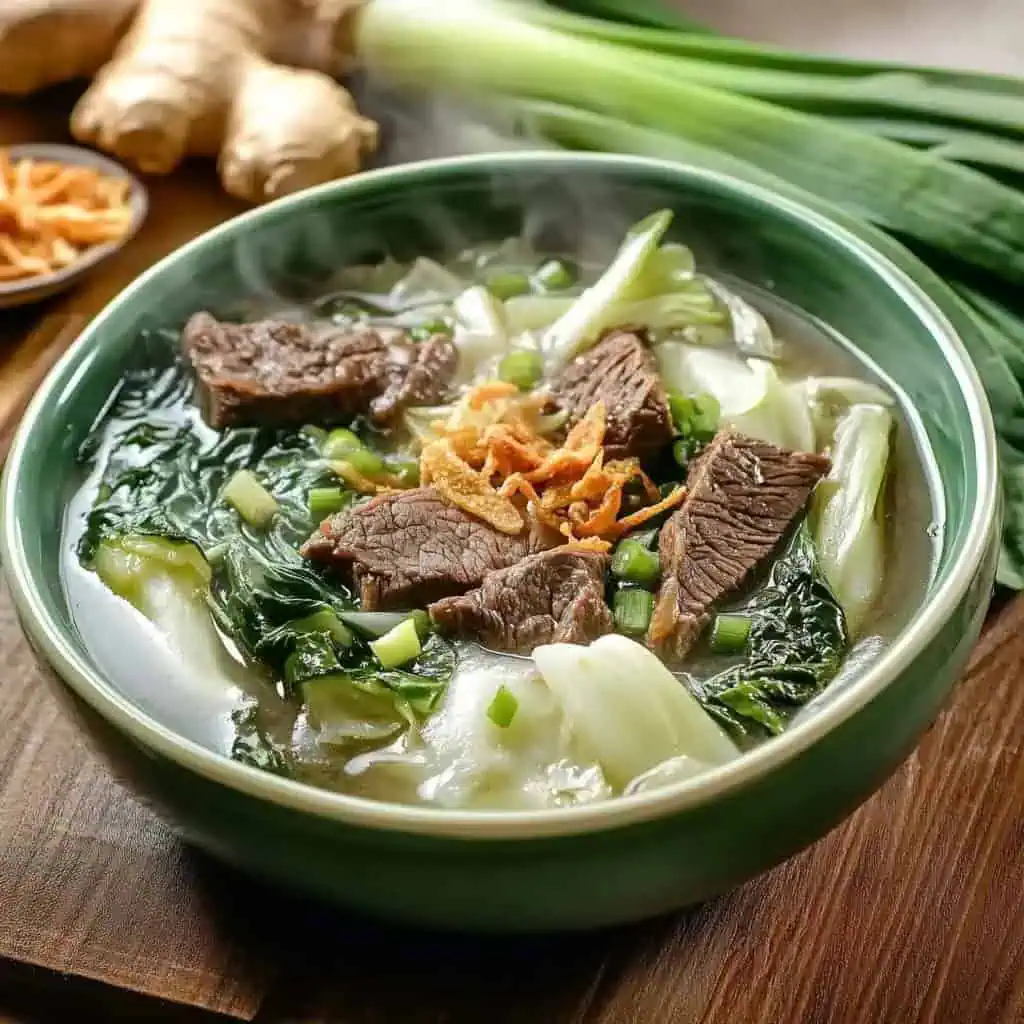
How To Make
- Place your beef in a large pot and cover completely with water. Bring it to a boil and let it continue boiling for 5 minutes until you see gray foam (scum) floating to the top. Drain everything in a colander and rinse the beef pieces under cold water. Wash your pot clean too.
- Put the cleaned beef back into your clean pot. Add the sliced ginger, onion, peppercorns, crispy fried shallots, and a few splashes of fish sauce. Pour in enough fresh water to cover everything by about an inch. Bring this to a boil over high heat, then lower the heat to maintain a gentle simmer. Let it cook slowly for 1½ to 2 hours, or until when you test a piece of beef, it's very tender and easily pulls apart.
- Once your beef is tender, add the Chinese cabbage and bok choy to the pot. Taste the soup and add more fish sauce if needed. Cook for just 5 more minutes – you want your vegetables to stay a little crisp and bright green.
- Ladle the hot soup into bowls, making sure each bowl gets a good mix of tender beef, vegetables, and clear broth. Top each bowl with a sprinkle of crispy fried shallots and chopped spring onions. Serve immediately while hot, with steamed rice on the side if you like.
- Remember to keep some extra fish sauce and calamansi on the table – your guests can add more seasoning to their taste.

Tips from Lola's Kitchen
- Use marrow bones: Add these alongside your meat choices for an incredibly rich, silky broth
- Practice patience: Never rush the simmering process—low and slow cooking is key to developing flavor and achieving tender meat
- Control ginger intensity: Add ginger gradually to achieve your preferred level of warmth and spice
- Waste not: Save vegetable trimmings like onion peels and carrot tops in a freezer bag to make stock later
- Perfect clarity: For restaurant-quality clear broth, strain it through cheesecloth before adding your vegetables
- Beef choice matters: While any stewing cut works, cuts with bones and collagen (like shanks and oxtail) create the most flavorful broth
- Skim diligently: Remove scum frequently during the initial boiling stage for the clearest, cleanest-tasting broth
Substitutions
- Beef: Pork hocks, chicken pieces, or even a mix of mushrooms for a vegetarian version
- Bok Choy: Spinach, Taiwanese cabbage, or any leafy greens you have available
- Fish Sauce: Light soy sauce (start with less and adjust, as it's less salty than fish sauce)
- Fresh Ginger: Ground ginger in a pinch (use 1 teaspoon per thumb-sized piece)
- Crispy Shallots: Toasted garlic bits, crispy fried onions, or even toasted breadcrumbs for texture
- Chinese Cabbage: Regular green cabbage, Napa cabbage, or even collard greens
- Spring Onions: Chives, leeks, or even a small amount of finely diced regular onion
Troubleshooting
- Tough Meat: If meat isn't tender after 2 hours, continue cooking in 30-minute intervals, checking frequently
- Too Gingery: Balance excessive ginger with additional fish sauce or black pepper, or dilute with a bit more water or broth
- Cloudy Broth: For clearer soup, strain through several layers of cheesecloth or fine-mesh sieve
- Bland Taste: Add fish sauce gradually, a teaspoon at a time, until desired flavor is reached
- Greasy Surface: Refrigerate the soup until fat solidifies on top, then remove it before reheating
- Vegetables Too Soft: Add vegetables in stages based on cooking time, with hardier vegetables first
- Too Salty: Add a peeled, quartered potato to absorb excess salt (remove before serving) or dilute with water and adjust seasonings
Storage & Reheating
- Refrigeration: Store in an airtight container for up to 4 days. The flavor actually improves after a day!
- Freezing: Freeze for up to 3 months, but exclude the vegetables as they'll become mushy. Add fresh vegetables when reheating.
- Reheating on Stovetop: Heat on medium until just simmering, being careful not to overcook the vegetables
- Microwave Reheating: Warm for 2-3 minutes on medium power, stirring halfway through for even heating
- Freshen Before Serving: Add a small knob of fresh grated ginger and some chopped spring onions when reheating to revive flavors

FAQ
Can I make this in a pressure cooker or Instant Pot?
Absolutely! Cook on high pressure for 45 minutes for tender beef. Add vegetables after pressure cooking and use the sauté function to finish them.
How do I know when the meat is perfectly done?
The beef should easily pull apart with a fork and almost melt in your mouth. If there's resistance, it needs more time.
Can I make this ahead for parties or gatherings?
Yes, it actually tastes better the next day when flavors have melded. Just add fresh vegetables when reheating to maintain their texture and color.
Is this soup healthy?
Very much so! It's rich in protein from the beef, offers anti-inflammatory benefits from ginger, and provides vitamins and minerals from the vegetables.
How spicy is this dish?
It's not spicy in a chili-hot way, but has a warming quality from the ginger. You can add bird's eye chilies for heat if desired.
Can children eat this dish?
Yes, it's a wonderful, nourishing soup for children. You might reduce the ginger slightly for very young palates.
What makes Lauya different from regular Nilaga?
The defining difference is the abundant use of ginger in Lauya, which gives it distinct warming and medicinal properties.
Is this good for colds and flu?
Many Filipinos consider it a natural remedy due to ginger's anti-inflammatory properties and the nourishing qualities of bone broth.
How can I make the broth more flavorful without adding too much salt?
Roast the bones for 15-20 minutes at 425°F before simmering, or add a bay leaf and whole garlic cloves to the broth.
Can I add other vegetables to this soup?
Absolutely! Traditional additions include sayote (chayote), potatoes, carrots, and white radish (labanos).
Related
Looking for other recipes like this? Try these:
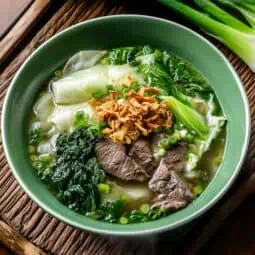
Filipino Beef Lauya
Equipment
- Large Heavy-Bottom Pot (Kaldero) For even heat distribution and preventing burning
- Sharp knife (kutsilyo) For slicing ginger, vegetables, and meat
- Skimmer/Spider (Sandok) For removing scum during boiling
- Fine-mesh strainer (salaan) For rinsing meat and straining broth
- Cutting board (Sangkalan) For preparing ingredients
Ingredients
For the Broth Base
- 1.5-2 kg beef baka - choice of Neck bones, Beef ribs, Oxtail or Stewing beef
- 2 thumb-sized ginger luya, thinly sliced
- 1 large white onion sibuyas, sliced
- 1 teaspoon whole black peppercorns paminta
- Fish sauce patis to taste
For the Vegetables
- ½ small Chinese cabbage pechay Baguio, sliced
- 1 bunch bok choy pechay, trimmed
- 2 stalks spring onions sibuyas dahon, chopped
For Garnish
- ½ cup crispy fried shallots
- Extra crispy shallots for serving
Instructions
- Place your beef in a large pot and cover completely with water. Bring it to a boil and let it continue boiling for 5 minutes until you see gray foam (scum) floating to the top. Drain everything in a colander and rinse the beef pieces under cold water. Wash your pot clean too.
- Put the cleaned beef back into your clean pot. Add the sliced ginger, onion, peppercorns, crispy fried shallots, and a few splashes of fish sauce. Pour in enough fresh water to cover everything by about an inch. Bring this to a boil over high heat, then lower the heat to maintain a gentle simmer. Let it cook slowly for 1½ to 2 hours, or until when you test a piece of beef, it's very tender and easily pulls apart.
- Once your beef is tender, add the Chinese cabbage and bok choy to the pot. Taste the soup and add more fish sauce if needed. Cook for just 5 more minutes – you want your vegetables to stay a little crisp and bright green.
- Ladle the hot soup into bowls, making sure each bowl gets a good mix of tender beef, vegetables, and clear broth. Top each bowl with a sprinkle of crispy fried shallots and chopped spring onions. Serve immediately while hot, with steamed rice on the side if you like.
- Remember to keep some extra fish sauce and calamansi on the table – your guests can add more seasoning to their taste.
Tips from Lola's Kitchen
- Use marrow bones along with meat for richer broth
- Never rush the simmering process - patience yields tender meat
- Add ginger gradually to control the intensity
- Save vegetable trimmings for stock
- For clearer broth, strain before adding vegetables
Nutrition
The Story Behind Filipino Beef Lauya
In the vast landscape of Filipino soup dishes, Beef Lauya stands as a testament to our ancestors' deep understanding of food as medicine. This soup emerged from the northern regions of the Philippines, where cool mountain air and occasional harsh weather called for warming, restorative dishes that could both nourish and heal.
While its more famous cousin, Nilagang Baka, appears on restaurant menus nationwide, Lauya holds a special place in Filipino home kitchens. The key difference lies in its generous use of ginger – not just as a flavoring, but as a central ingredient that transforms this dish into what many Filipino families consider their natural defense against colds and flu. This abundance of ginger, or "luya" in Filipino, gives the dish its name and its distinctive character.
Traditional Chinese medicine's influence on Filipino cooking is evident in Lauya's composition. The combination of tender beef, warming ginger, and fresh vegetables reflects the age-old Asian principle of building immunity through food. Home cooks have long known that the slow-simmered broth, enriched with minerals from beef bones and the anti-inflammatory properties of ginger, offers more than just comfort – it provides genuine healing benefits.
In many Filipino households, particularly in regions like the Cordilleras and Ilocos, Lauya has become an integral part of recovery food traditions. When family members feel under the weather, it's common to hear "Magluto tayo ng Lauya" (Let's cook Lauya), as the dish is believed to help reduce fever, ease congestion, and restore strength. This belief isn't merely folkloric – modern science has validated ginger's powerful anti-inflammatory and immune-boosting properties.
Today, Beef Lauya continues to evolve while maintaining its soulful essence. Some modern versions might include additional vegetables or varying cuts of beef, but the core elements – the clear, ginger-infused broth and tender meat – remain unchanged. Whether served during cold mountain evenings, rainy seasons, or as a remedy for illness, Lauya represents the enduring wisdom of Filipino culinary tradition, where healing and delicious flavors come together in perfect harmony.
The dish's legacy lives on as new generations discover its comforting properties, making it a perfect example of how traditional Filipino cooking continues to serve both body and soul. In an age of fast food and instant solutions, Beef Lauya reminds us that sometimes, the most effective remedies are the ones that have been simmering in our cultural pot all along.
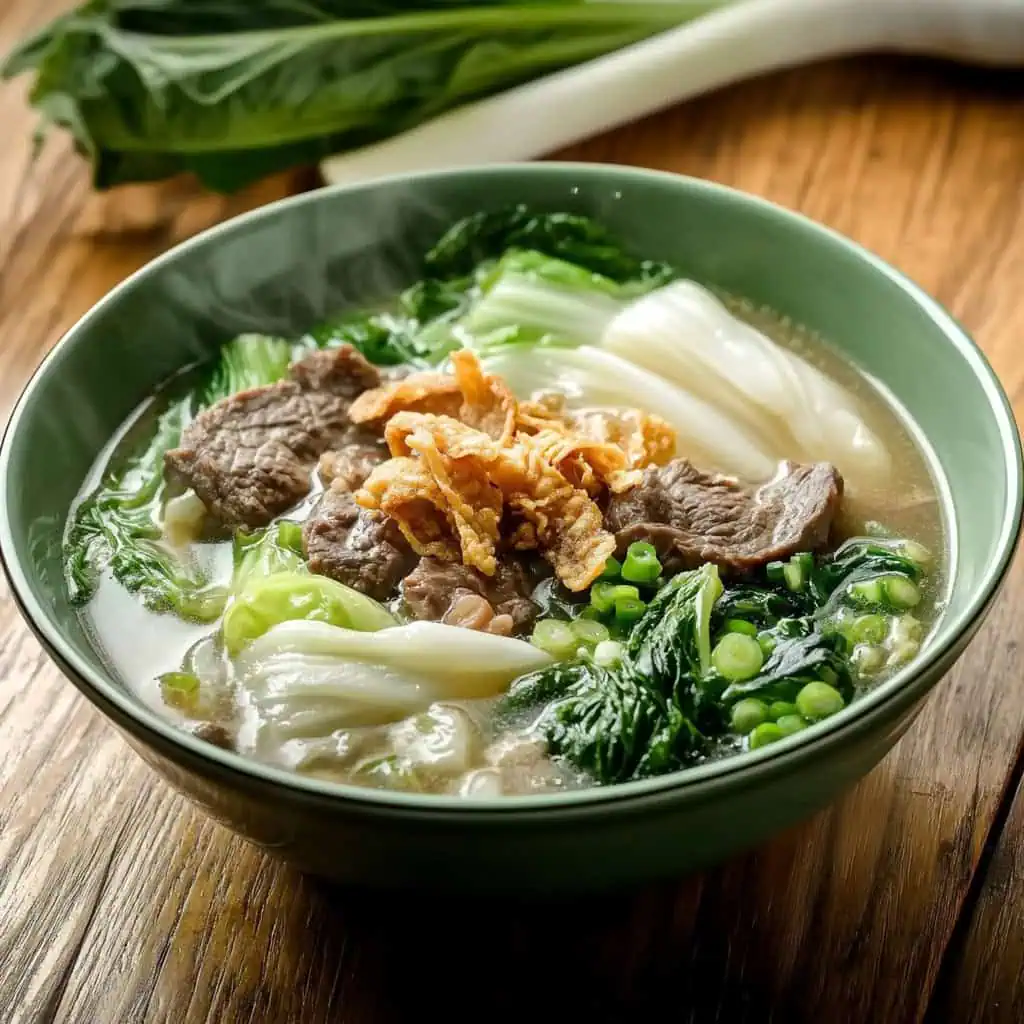



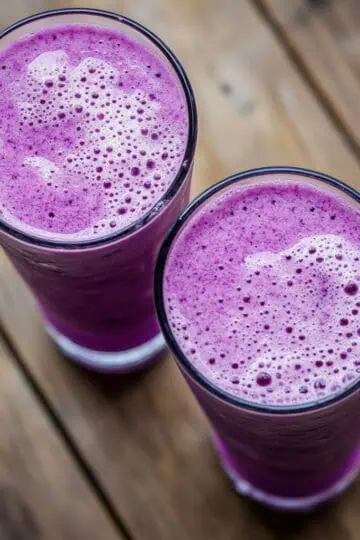





Comments
No Comments